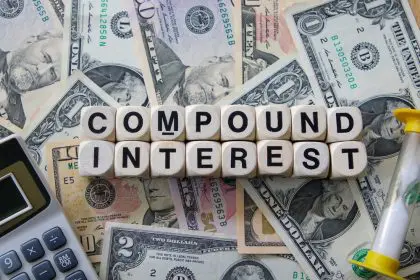Your childhood baggage might be emptying your bank account faster than you think
Picture this: You’re scrolling through your bank app for the third time today, watching your balance dwindle like sand through an hourglass. Sound familiar? If you’re constantly wondering where your money goes despite having what seems like a decent income, the answer might not be hidden in your spending habits or budgeting skills. Instead, it could be lurking in something much deeper – your attachment style.
Before you roll your eyes and click away, hear us out. The way you bonded (or didn’t bond) with your caregivers as a tiny human might be the secret saboteur behind your financial struggles. It’s wild, we know, but science backs this up in ways that’ll make your wallet weep.
The psychology behind your money moves
Your attachment style isn’t just therapy speak – it’s the blueprint for how you navigate relationships, emotions, and yes, even your finances. Think of it as your emotional operating system, installed during those crucial early years when your brain was basically a sponge soaking up every interaction with mom, dad, or whoever was calling the shots.
These early experiences wire your brain for how you’ll handle stress, seek comfort, and make decisions for the rest of your life. When money stress hits (and let’s be real, it hits hard these days), your attachment system kicks into overdrive, often leading to financial choices that would make your future self want to time-travel back and shake some sense into you.
The four attachment styles each come with their own special brand of money madness. Secure attachment is like winning the emotional lottery – these folks generally have their financial act together. But the other three? They’re where things get messy, expensive, and downright dramatic.
Anxious attachment: The emotional spender’s nightmare
If you have anxious attachment, your relationship with money probably feels like a chaotic rollercoaster designed by someone who clearly doesn’t understand physics. Your childhood likely involved caregivers who were inconsistent – sometimes attentive, sometimes distant, leaving you constantly guessing where you stood.
Fast-forward to adulthood, and that same uncertainty plays out in your bank account. You might find yourself making impulsive purchases when you’re feeling insecure or lonely, almost like you’re trying to buy your way to emotional stability. That designer bag isn’t just a bag – it’s a temporary band-aid for deeper feelings of inadequacy.
Retail therapy becomes your drug of choice
When anxiety hits, shopping feels like the perfect solution. The dopamine rush from buying something new temporarily masks the uncomfortable feelings swirling around inside. But here’s the kicker – this only works for about five minutes before buyer’s remorse crashes the party, leaving you with less money and the same emotional baggage.
You might also struggle with financial boundaries, saying yes to expensive social plans you can’t afford because the fear of missing out (or being left out) trumps your budget every single time. Your bank account becomes collateral damage in your quest for connection and acceptance.
Avoidant attachment: The financial hermit’s dilemma
Avoidant attachment folks are the opposite extreme – you learned early that emotional needs were inconvenient or unwelcome, so you became a master at self-reliance. Your caregivers might have been emotionally unavailable or uncomfortable with feelings, teaching you that depending on others equals disappointment.
This translates into some seriously problematic money behaviors. You might hoard cash like a financial doomsday prepper, convinced that depending on anyone else (including financial advisors, accountants, or even your own partner) is a recipe for disaster. While this might sound responsible, it often leads to missed opportunities and financial stagnation.
Control freak meets money management
Your need for control extends to every dollar in your account. You might avoid investments because they involve uncertainty, stick with low-yield savings accounts because they feel “safer,” or refuse to discuss finances with your partner because vulnerability feels too risky.
Ironically, your attempts to protect yourself financially often backfire. By avoiding calculated risks and refusing help, you might be sabotaging your long-term financial growth while convincing yourself you’re being responsible.
Disorganized attachment: Financial chaos incarnate
Disorganized attachment is what happens when your caregivers were both your source of comfort and fear – think inconsistent, unpredictable, or even scary interactions during childhood. This creates an internal storm that follows you into adulthood, and your finances definitely aren’t immune.
Your money behaviors might swing wildly between extremes. One month you’re budgeting like a financial guru, the next you’re blowing your savings on something completely random. You might simultaneously fear being broke and sabotage your own financial success, creating a maddening cycle that keeps you stuck.
The self-sabotage spiral
Just when things start looking up financially, you might unconsciously torpedo your progress. Maybe you quit a good job without a backup plan, make a risky investment with money you can’t afford to lose, or suddenly decide you “deserve” an expensive vacation you haven’t budgeted for.
This isn’t conscious self-destruction – it’s your attachment system trying to maintain the chaos that feels familiar, even when it’s harmful. Stability might feel foreign and uncomfortable, so your brain creates drama to return to what feels “normal.”
Breaking free from attachment-driven money madness
The good news? Understanding your attachment style is like getting the cheat codes for your own behavior. Once you recognize the patterns, you can start interrupting them before they wreck your financial goals.
Start by paying attention to your emotional state when you make money decisions. Are you shopping because you need something, or because you’re feeling lonely? Are you avoiding financial planning because it’s boring, or because it triggers anxiety about the future?
Practical steps for financial healing
Create new money rituals that feel emotionally safe. If you’re anxiously attached, try implementing a waiting period before major purchases – give yourself 24 hours to sit with the urge and see if it’s really about the item or about filling an emotional void.
For avoidant types, practice small acts of financial vulnerability. Maybe that means asking a trusted friend for investment advice or letting your partner help with budgeting decisions. Baby steps count.
If you’re dealing with disorganized attachment, focus on creating predictable financial routines. Automate your savings, set up consistent bill-paying schedules, and work with a therapist to understand your triggers before they derail your progress.
Your wallet will thank you later
Here’s the plot twist nobody talks about: healing your attachment wounds doesn’t just improve your relationships – it can literally save you thousands of dollars. When you stop using money as emotional medication, you free up resources for things that actually matter.
Your attachment style might have been formed decades ago, but your bank account exists in the present. By understanding how your early experiences shaped your money mindset, you can finally break free from financial patterns that no longer serve you.
The journey isn’t always pretty, and it definitely isn’t quick, but every dollar you save by making conscious choices instead of attachment-driven ones is a victory worth celebrating. Your future self – and your bank balance – will definitely thank you for doing the work.
















